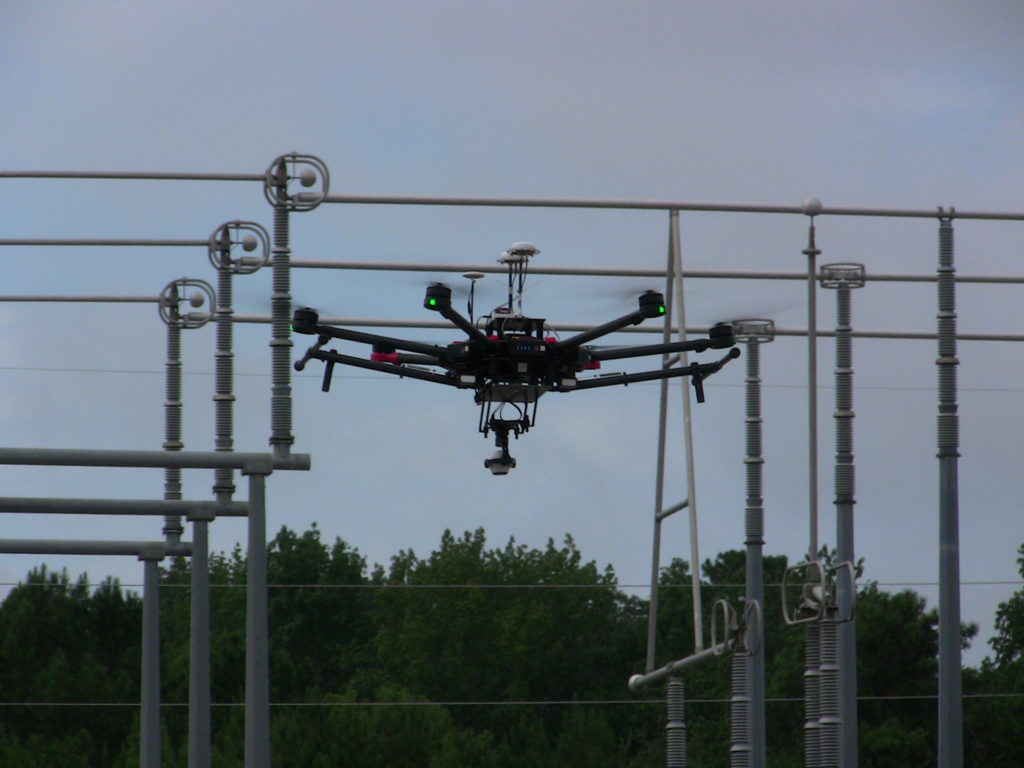EPRI Investigates How These Technologies Can Make Inspections Safer, Cheaper, and More Effective
Improved inspections of power delivery infrastructure can help reduce the risk of outages by pinpointing equipment that needs to be repaired or replaced. Today’s inspections require a lot of time, people, and equipment. “It’s a combination of aerial inspections from helicopters and fixed-wing aircraft, climbing poles, using bucket trucks, and walking inspections,” said EPRI Senior Technical Leader Dexter Lewis. “Utilities use a different mix of those depending on the power line’s importance, budgets, and timing.”
Utilities can use helicopters to reach remote areas and cover more territory, but sending inspectors into the air has safety risks. Utilities are exploring drone technologies to deliver the benefits of aerial inspections while enhancing worker safety. “With alternatives that keep humans on the ground, you can reduce risk,” said Lewis. “There’s also an opportunity to reduce costs and time of inspections while improving the quality of the information gathered.”
With the emergence of relatively inexpensive drones and artificial intelligence (AI), EPRI is investigating their application for transmission and distribution inspection, building on prior EPRI research on the use of unmanned aircraft to capture images.
“One lesson we have learned from our drone research is that we need an automated system for processing the large number of images that drones can capture,” said Drew McGuire, an EPRI distribution systems program manager. “While we were investigating ways to use drones to improve inspection, interest in AI among utilities increased, and the two technologies have converged into a great opportunity. If drones capture a large volume of high-quality images of transmission and distribution equipment, AI can analyze them for signs of breakage, deterioration, and other problems.”
EPRI has collected about 7,000 images of transmission assets and curated them—in other words, labeled the components in the images and identified whether they were operational or defective.
“We gathered images from utilities across the country,” said McGuire. “Then, we shared the curated images with AI developers and researchers and educated them about transmission inspections. We showed them what they should look for and what the inspection criteria are. This enabled them to train AI algorithms to identify assets needing repair or replacement.”

EPRI tested these algorithms using a data set that had not been previously used to train the algorithms, enabling the researchers to better understand potential real-world performance. The accuracy of the algorithms’ predictions was promising, considering that this was the first time many of them had been used to evaluate transmission infrastructure. “It indicates that this is a worthwhile endeavor, and we see a great opportunity to accelerate the maturity and performance of this technology,” said McGuire.
EPRI is collecting additional images that the AI vendors can use to continue training the algorithms and enhance their performance. The goal is to match or surpass the effectiveness of traditional inspection methods while lowering costs and increasing the speed.
“As the technologies improve, our testing can provide objective, statistically valid insights into how well they work,” said McGuire. “Maybe they’re good at detecting broken insulators but not good at identifying broken conductors. By doing this, we can provide utilities with an assessment of the state of the technology and expected performance while helping AI professionals get better at these applications.”
In its similar project for distribution systems, EPRI is compiling and curating thousands of images for AI developers, who will use the images to train algorithms later this year. Long term, EPRI plans to collect and store more than 100,000 distribution and transmission images and use them to train algorithms.
As the sophistication of AI and drones increases, power line inspections may become more autonomous—though a complete inspection revolution is unlikely in the short term. “It’s more likely to be small deployments that grow steadily, resulting in incremental improvements in efficacy and reduced operations and maintenance costs,” said McGuire. “We might never get to full autonomy, but we’re working toward augmented inspections that are safer, more effective, and less expensive.”
EPRI Technical Experts:
Dexter Lewis, Drew McGuire


